From a Wall Street Journal online article:
 Beethoven moved nearly 70 times while living in Vienna. Two of his former homes are open to the public, and many more are marked with commemorative plaques.
Beethoven moved nearly 70 times while living in Vienna. Two of his former homes are open to the public, and many more are marked with commemorative plaques.
High above Vienna’s historic center, at the edge of the hilly Vienna Woods, the city’s Beethoven Museum, is housed in a onetime bakery complex dating back to the late Middle Ages, with an 18th-century annex containing a small apartment where Beethoven spent the summer of 1802. While living here, he composed his tragic “Tempest” piano sonata and began work on his 3rd Symphony, the “Eroica.”

 LUDWIG VAN BEETHOVEN is as Viennese as apple strudel. Though born in Bonn, Germany in 1770, he moved to the Austrian capital when he was in his early 20s, and then spent the rest of his 56 years changing the course of Western music from the city on the Danube. A quirky, cantankerous celebrity in his own time, he premiered his groundbreaking symphonies and concertos in Vienna’s grand palaces, escaped the summer heat in what are now its sleepy suburbs, and moved around between dozens of supposedly squalid apartments that sprawl across much of the city.
LUDWIG VAN BEETHOVEN is as Viennese as apple strudel. Though born in Bonn, Germany in 1770, he moved to the Austrian capital when he was in his early 20s, and then spent the rest of his 56 years changing the course of Western music from the city on the Danube. A quirky, cantankerous celebrity in his own time, he premiered his groundbreaking symphonies and concertos in Vienna’s grand palaces, escaped the summer heat in what are now its sleepy suburbs, and moved around between dozens of supposedly squalid apartments that sprawl across much of the city.
To read more: https://www.wsj.com/articles/where-to-binge-on-beethoven-in-vienna-11568303745



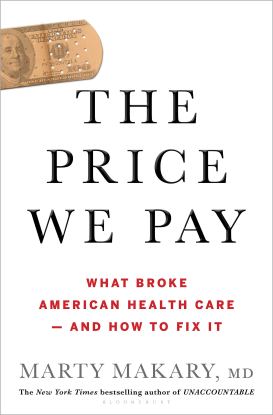 Dr. Makary examines the practice of performing unnecessary vascular procedures in a chapter of his new book, “The Price We Pay,” published Sept. 10. In it, he describes what seems to be the “predatory” practice of some doctors seeking out patients at health screenings in churches.
Dr. Makary examines the practice of performing unnecessary vascular procedures in a chapter of his new book, “The Price We Pay,” published Sept. 10. In it, he describes what seems to be the “predatory” practice of some doctors seeking out patients at health screenings in churches.
 …the Getty Villa, despite some anomalies and insertions, is considered a strong likeness, which makes it a powerful locale for “Buried by Vesuvius: Treasures From the Villa dei Papiri,” the first major exhibition of works discovered in the Roman residence. The show includes Weber’s 1758 architectural map—used to build the Getty Villa—along with some of the approximately 90 sculptures pulled from the site, showing athletes, philosophers, rulers, poets and mythological figures. The exhibition also displays findings from the recent excavations.
…the Getty Villa, despite some anomalies and insertions, is considered a strong likeness, which makes it a powerful locale for “Buried by Vesuvius: Treasures From the Villa dei Papiri,” the first major exhibition of works discovered in the Roman residence. The show includes Weber’s 1758 architectural map—used to build the Getty Villa—along with some of the approximately 90 sculptures pulled from the site, showing athletes, philosophers, rulers, poets and mythological figures. The exhibition also displays findings from the recent excavations.
 I built a frame out of ash wood. Then I hand-formed and welded body panels onto the frame. I re-engineered the brakes, the steering and the clutch system to fit properly, and I hand-formed the grille out of aluminum. The seats I built out of plywood, foam and vinyl that looks like leather. When I started, I had no idea how to do any of this.
I built a frame out of ash wood. Then I hand-formed and welded body panels onto the frame. I re-engineered the brakes, the steering and the clutch system to fit properly, and I hand-formed the grille out of aluminum. The seats I built out of plywood, foam and vinyl that looks like leather. When I started, I had no idea how to do any of this.
 “If you look back in the day to the ’70s and ’80s, there were these guys…raised with this mythology of the West,” said Ken Mirr, a local ranch broker. “It was attachment to something Hollywood produced. Their children aren’t necessarily always as interested in operating the properties. Sometimes the kids just see cows and think ‘What should I do with this?’”
“If you look back in the day to the ’70s and ’80s, there were these guys…raised with this mythology of the West,” said Ken Mirr, a local ranch broker. “It was attachment to something Hollywood produced. Their children aren’t necessarily always as interested in operating the properties. Sometimes the kids just see cows and think ‘What should I do with this?’”
 There is no official definition of what constitutes a dry wine in the U.S. The amount of sugar left in the wine after fermentation or added afterward is, however, sometimes noted on a wine’s label, in grams per liter. According to Mr. Ramey, a wine generally considered dry would have less than 1 gram per liter RS (residual sugar), or 0.1%. Beyond that, a wine with 1% RS (10 grams per liter) is off-dry, and a wine at 3% RS (30 grams per liter) or above is sweet.
There is no official definition of what constitutes a dry wine in the U.S. The amount of sugar left in the wine after fermentation or added afterward is, however, sometimes noted on a wine’s label, in grams per liter. According to Mr. Ramey, a wine generally considered dry would have less than 1 gram per liter RS (residual sugar), or 0.1%. Beyond that, a wine with 1% RS (10 grams per liter) is off-dry, and a wine at 3% RS (30 grams per liter) or above is sweet.
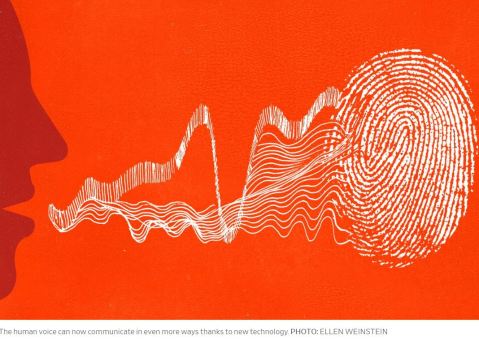 Slower speech, for example, could indicate fatigue or sorrow at one point in time, but over longer periods could signal something more severe, co-founder Jim Harper said.
Slower speech, for example, could indicate fatigue or sorrow at one point in time, but over longer periods could signal something more severe, co-founder Jim Harper said.
 At the center of the attack on those of us born between 1946 and 1964, days when the U.S. birth rate was extraordinarily high, is our supposed radical individualism. Its roots are said to be found in the excesses of the 1960s, a decade for which “boomers have become fall guys.”
At the center of the attack on those of us born between 1946 and 1964, days when the U.S. birth rate was extraordinarily high, is our supposed radical individualism. Its roots are said to be found in the excesses of the 1960s, a decade for which “boomers have become fall guys.”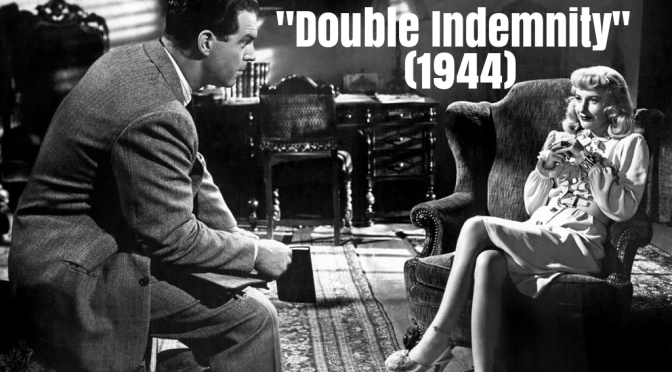
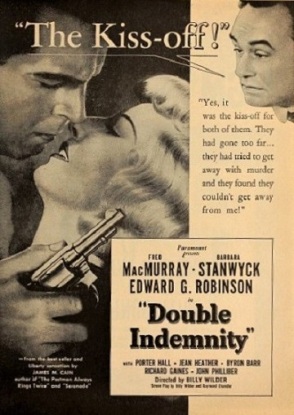 Seventy-five years ago, “Double Indemnity” opened in theaters across America. It was an instant hit, and remains to this day a staple offering of revival houses and on cable TV and streaming video. Yet little journalistic notice has been taken of the birthday of Billy Wilder’s first great screen drama, a homicidal thriller that nonetheless had—and has—something truly unsettling to say about the dark crosscurrents of middle-class American life.
Seventy-five years ago, “Double Indemnity” opened in theaters across America. It was an instant hit, and remains to this day a staple offering of revival houses and on cable TV and streaming video. Yet little journalistic notice has been taken of the birthday of Billy Wilder’s first great screen drama, a homicidal thriller that nonetheless had—and has—something truly unsettling to say about the dark crosscurrents of middle-class American life.
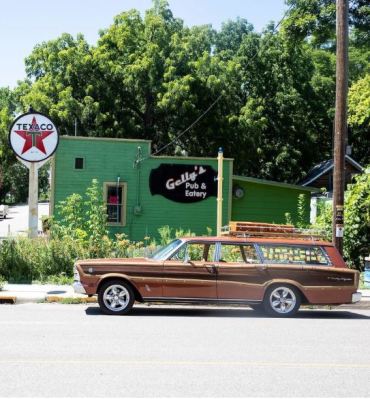 Choosing a landscape for a car is like choosing a wine for a meal. The Country Squire—which, I discovered, handled with all the nimbleness of a riverboat—felt like a natural pairing for the Mississippi River valley south of the Twin Cities. The curves would be gentle, and the views sweeping: high bluffs on one side of the car, water on the other. My family and I would pick up Highway 61 in St. Paul, hopscotching between it and Wisconsin’s fantastically scenic Great River Road, exploring the small waterfront towns along the way. We’d stop for the first night in Red Wing, Minn., and the next in Alma, Wis., 98 miles downriver. The car came with a 150-mile-a-day allowance, and a request that we not venture farther than 100 miles from Minneapolis, should anything happen.
Choosing a landscape for a car is like choosing a wine for a meal. The Country Squire—which, I discovered, handled with all the nimbleness of a riverboat—felt like a natural pairing for the Mississippi River valley south of the Twin Cities. The curves would be gentle, and the views sweeping: high bluffs on one side of the car, water on the other. My family and I would pick up Highway 61 in St. Paul, hopscotching between it and Wisconsin’s fantastically scenic Great River Road, exploring the small waterfront towns along the way. We’d stop for the first night in Red Wing, Minn., and the next in Alma, Wis., 98 miles downriver. The car came with a 150-mile-a-day allowance, and a request that we not venture farther than 100 miles from Minneapolis, should anything happen.